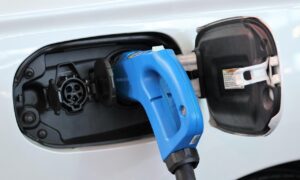Lithium batteries have revolutionized various industries by providing a reliable and efficient power source for portable electronics, electric vehicles, and renewable energy systems. As the demand for high-performance and long-lasting batteries grows, understanding the factors influencing their performance becomes crucial. One such factor is temperature, which significantly affects lithium batteries’ overall functionality and lifespan.
What are Lithium Batteries?
Lithium batteries are rechargeable energy storage devices that utilize lithium ions to move between the positive and negative electrodes during charging and discharging. They are known for their high energy density, lightweight construction, and long cycle life, making them ideal for various applications. Lithium-ion (Li-ion) and lithium polymer (LiPo) batteries are the most common types of lithium batteries used today.
Importance of Lithium Batteries
Lithium batteries have become integral to our daily lives due to their numerous advantages. They power our smartphones, laptops, tablets, and other portable devices, offering long-lasting performance and quick charging capabilities. Additionally, lithium batteries are crucial for the electrification of transportation, enabling electric vehicles to travel longer distances and reducing greenhouse gas emissions.

Factors Affecting Lithium Battery Performance
Several factors influence the performance and longevity of lithium batteries. Understanding these factors helps in optimizing their usage and ensuring optimal performance. So, you buy $527.00. Apart from temperature, other vital factors include capacity, charging and discharging rates, and aging.
Temperature
Temperature is a critical parameter that affects lithium battery performance. Extreme high and low temperatures can harm the battery’s capacity, efficiency, and safety. Condition monitoring plays a vital role in managing and controlling the operating temperature of lithium batteries. What is Condition monitoring? By continuously monitoring temperature levels, potential issues can be identified early on, allowing for timely interventions to maintain the battery’s optimal performance and extend its lifespan.
Capacity
The capacity of a lithium battery refers to the amount of energy it can store and deliver. Extreme temperatures can reduce the battery’s capacity, limiting its runtime and overall performance. High temperatures can cause capacity loss, while low temperatures can reduce usable capacity.
Charging and Discharging Rates
The charging and discharging rates determine how quickly a lithium battery can charge and deliver energy. Extreme temperatures can affect these rates, reducing charging efficiency and slower discharge rates. High temperatures can accelerate the self-discharge pace, leading to shorter battery life.
Aging
Over time, lithium batteries undergo aging, which can impact their overall performance. Extreme temperatures can accelerate aging, leading to increased internal resistance, decreased capacity, and reduced cycle life. Managing temperature plays a vital role in minimizing battery aging.
Understanding Extreme Temperatures
Extreme temperatures refer to conditions significantly higher or lower than the recommended operating range for lithium batteries. High temperatures typically exceed 40°C (104°F), while low temperatures go below -20°C (-4°F). It is important to note that the specific temperature limits may vary depending on the battery chemistry and design.
Effects of High Temperatures
High temperatures can have several adverse effects on lithium battery performance:
Capacity Loss
Exposure to high temperatures can cause irreversible capacity loss in lithium batteries. It can lead to decreased runtime and reduced overall battery performance.
Increased Self-Discharge
At elevated temperatures, lithium batteries experience increased self-discharge rates. The battery discharges even when not in use, reducing its available capacity.
Accelerated Aging
High temperatures accelerate the aging process of lithium batteries, causing increased internal resistance, capacity degradation, and reduced cycle life.
Safety Concerns
Extreme heat can pose safety risks, including thermal runaway, resulting in battery swelling, leakage, or, in rare cases, even fire or explosion.
Effects of Low Temperatures
Low temperatures also have notable impacts on lithium battery performance:
Reduced Capacity
Cold temperatures can reduce the available capacity of lithium batteries, leading to shorter runtime and decreased overall performance.
Increased Internal Resistance
The internal resistance of a lithium battery increases at low temperatures, limiting its ability to deliver energy quickly. This can result in reduced power output and slower charging rates.
Limited Charging Efficiency
Charging a lithium battery in freezing weather can be less efficient than average operating temperatures. It may take longer to charge the battery, affecting its usability fully.
Safety Concerns
Exposing lithium batteries to extremely low temperatures can lead to freezing of the electrolyte, which can cause irreversible damage to the battery and compromise its safety.
Impact of Extreme Temperatures on Lithium Battery Performance
The impact of extreme temperatures on lithium battery performance can be summarized as follows:
High Temperatures
Capacity Loss
Exposure to high temperatures causes irreversible capacity loss in lithium batteries. For every 10°C (18°F) increase in temperature, the capacity loss can be as high as 20%.
Increased Self-Discharge
High temperatures accelerate the self-discharge rate of lithium batteries, resulting in reduced usable capacity and shorter battery life.
Accelerated Aging
The aging process of lithium batteries is accelerated at high temperatures, leading to increased internal resistance, capacity degradation, and decreased cycle life.
Safety Concerns
Extreme heat can cause thermal runaway, where the battery’s temperature and pressure increase rapidly. This can result in battery swelling, leakage, or, in rare cases, fire or explosion.
Low Temperatures
Reduced Capacity
Cold temperatures reduce the available capacity of lithium batteries, impacting their runtime and overall performance.
Increased Internal Resistance
Low temperatures increase the internal resistance of lithium batteries, limiting their ability to deliver energy quickly and effectively.
Limited Charging Efficiency
Charging lithium batteries in extreme cold weather is less efficient, leading to longer charging times and decreased usability.
Safety Concerns
Extreme cold can cause the electrolyte in lithium batteries to freeze, potentially damaging the battery and posing safety risks.
Managing Extreme Temperatures for Optimal Battery Performance
Managing extreme temperatures is crucial to ensure the optimal performance and longevity of lithium batteries. Several strategies can be employed to mitigate the impact of temperature on battery performance:
Temperature Monitoring and Control
Implementing temperature monitoring systems allows for real-time tracking of battery temperature. Monitoring and maintaining the battery within the recommended operating temperature range can minimize the risk of performance degradation and safety hazards.
Thermal Management Systems
Thermal management systems, such as heat sinks, fans, or liquid cooling, can be employed to regulate battery temperature. These systems help dissipate heat generated during battery operation, keeping it within the optimal range and preventing excessive temperature rise.
Battery Packaging and Design
Optimizing the packaging and design of lithium batteries can contribute to better temperature management. Enclosing the battery in materials with good thermal conductivity can aid in heat dissipation, while insulation materials can protect against extreme temperatures.
Best Practices for Battery Usage in Extreme Temperatures
When using lithium batteries in extreme temperature conditions, the following best practices should be followed:
Avoiding Exposure to Extreme Temperatures
Whenever possible, avoid exposing lithium batteries to extreme temperatures. Store and operate them within the recommended temperature range specified by the manufacturer.
Preconditioning Batteries
Preconditioning involves bringing the battery to a moderate temperature before using it in extreme conditions. For example, if a battery has been stored in a cold environment, it should be allowed to warm up gradually to room temperature before use.
Proper Charging and Discharging
Follow the recommended charging and discharging guidelines provided by the battery manufacturer. Avoid fast charging or discharging at extreme temperatures, further impacting battery performance and longevity.
Storage Considerations
Keep lithium batteries in a cool and dry environment when storing them for an extended period. Extreme temperatures during storage can lead to irreversible damage and capacity loss.
Future Developments in Lithium Battery Technology
Continual research and development efforts are focused on improving the performance and resilience of lithium batteries, particularly in extreme temperature conditions. Some promising developments include:
Advanced Thermal Management Systems
Researchers are exploring innovative thermal management systems, such as phase change materials and thermoelectric cooling, to enhance lithium batteries’ heat dissipation and temperature regulation.
Enhanced Battery Materials
Developing advanced electrode materials and electrolytes aims to improve lithium batteries’ thermal stability and performance, reducing extreme temperatures’ impact on their functionality.
Solid-State Batteries
Solid-state batteries, which utilize solid electrolytes instead of liquid electrolytes, are being actively researched. These batteries offer improved safety, stability, and performance under extreme temperatures.
Conclusion
Extreme temperatures significantly impact the performance and longevity of lithium batteries. High temperatures can lead to capacity loss, increased self-discharge, accelerated aging, and safety concerns. Low temperatures reduce capacity, increased internal resistance, limited charging efficiency, and safety risks. Managing temperature through monitoring systems, thermal management, and battery design is essential for optimal battery performance. Adhering to best practices, such as avoiding extreme temperature exposure and proper battery usage, can help maximize battery life. Ongoing advancements in thermal management systems, battery materials, and solid-state technology promise to improve lithium battery performance under extreme temperature conditions.



































